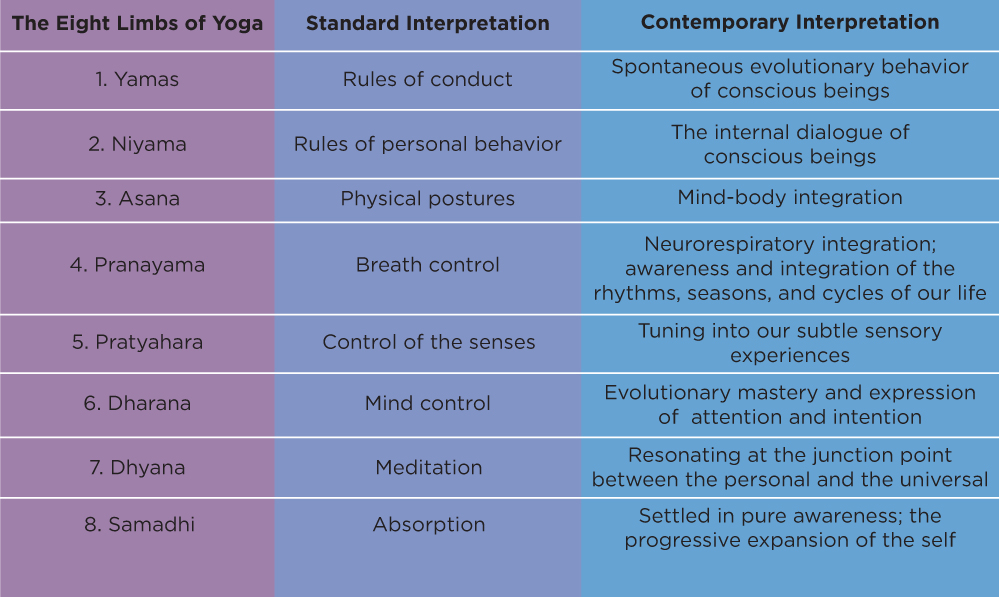
DECEMBER POM & TOM: Dhyana and Samadhi
December 1st, 2014
Georg Feuerstein describes this beautifully, here: “On that journey of growth, those moments involving the temporary
eclipse of the ego form important landmarks for the yogin. These are the
various states of ecstasy (samadhi) that can blossom through the agency
of meditation or that may overwhelm the practitioner suddenly during
the performance of rituals or in the midst of everyday activities. We
become, in consciousness, the bird we contemplate; we become the tree in
which the sap circulates and which stretches its ramified crown toward
the invigorating sun; we become the solar disk whose vivifying energies
pour over the planets of our galaxy; we become the universe in its grand
immensity and pulsating fullness. We may even become one with the
tranquil center in the depth of our own being, or unite with the
all-comprising wholeness of the supreme Being.” – http://breathelosgatos.com/blog/?p=1248
energy, mindfulness, contemplative calm, and wisdom.” She says, “Most commentators say that these aphorisms refer to levels of contemplative calm (samadhi). Others, however, argue that they refer the cessation of thought (nirodha), and this is the interpretation I develop here. All of Part One of the Yoga Sutra seems to explore the meaning and means of bringing thought to rest; contemplative calm is given as just one of the states that can lead to cessation of thought.”
DECEMBER POM & TOM
Our Themes of the Month are Dhyana (Meditation) and Samadhi (Absorption/Enlightenment).
“Patanjali’s ashtanga yoga includes eight components of practice (“ashtanga” means “eight-limbed” in Sanskrit), and dharana, or concentration is the sixth of these eight limbs. The seventh limb is dhyana, or meditation, and the eighth and final limb is samadhi, or enlightenment. These last three limbs are often studied together and are called antaratma sadhana, or the innermost quest.” – from http://www.yogajournal.com/article/yoga-101/seeking-samadhi/
Note: The practice of the final three limbs is also called samyama (according to Yoga Sutra 3.4)
Our Poses of the Month
are poses of meditation (such as Sukhasana, Virasana, and Balasana, with supports as needed, as well as Ardha Padmasana and Padmasana, for those who are open enough to sit in these poses safely) and poses of introspection (forward folds). Please remember to open hamstrings, hips, and low backs before heading into the deeper forward folds (shoulders, too, for kurmasana), and maintain a balanced practice by also including stretches for the quads, hip flexors, and full front body! Remind students not to push; rather, to hold steady, breathe, and observe.Asana:
Vinyasa – Upavistha Konasana (wide leg forward fold) & Kurmasana (tortoise pose)
Slow Flow – Upavistha Konasana (wide leg forward fold) & Kurmasana (tortoise pose)
Deep Stretch – Supported Upavistha Konasana (supported wide leg forward fold)
Resources
Sukhasana: http://www.yogajournal.com/pose/easy-pose/
Kurmasana: https://yogainternational.com/article/view/kurmasana-tortoise-pose-the-journey-inward
Upavistha Konasana (supported wide leg forward fold): http://dorestorativeyoga.blogspot.com/2009/11/supported-wide-angle-fold-upavistha.html
Pranayama: Ujjayi Breath, Natural Breath (especially in guided relaxation), Nadi Shoduna (Alternate Nostril Breathing)
Resources
Nadi Shoduna Pranayama – http://takemetotheriveryoga.com/wpsite/?tag=dharana
Mantra: Soham (and Hamsa) mantra
Resources
Soham (and Hamsa) mantra – http://www.swamij.com/soham-mantra.htm
Mudra: Dhyana Mudra (right open palm resting in left open palm), Chin/Jnana Mudra (thumb and forefinger touching)
Resources
Mudras: https://yogainternational.com/article/view/2-meditation-mudras,
http://www.joythruyoga.com/mudras.html
Meditation:
A Beginner’s Guide to Meditation: http://www.yogajournal.com/article/practice-section/let-s-meditate/
Meditation Index of Articles: http://www.swamij.com/index-yoga-meditation-meditation.htm
Meditation: http://www.srichinmoy.org/spirituality/concentration_meditation_contemplation/meditation
Seeking Samadhi: http://www.yogajournal.com/article/yoga-101/seeking-samadhi/
Samadhi is the beginning, not the end of Yoga: http://www.tm.org/blog/meditation/samadhi-yoga/
What is Samadhi?: http://breathelosgatos.com/blog/?p=1248
you! Please let me know if you have any questions, and
please share your thoughts, inspirations, and any additional resources
you find on our Facebook Group page. Blessings to you in this season of the Solstice. I hope to see you on the mat soon.
With love,
Allison
“Above the toil of life my soul is a bird of fire winging the Infinite.” – www.srichinmoy.org






